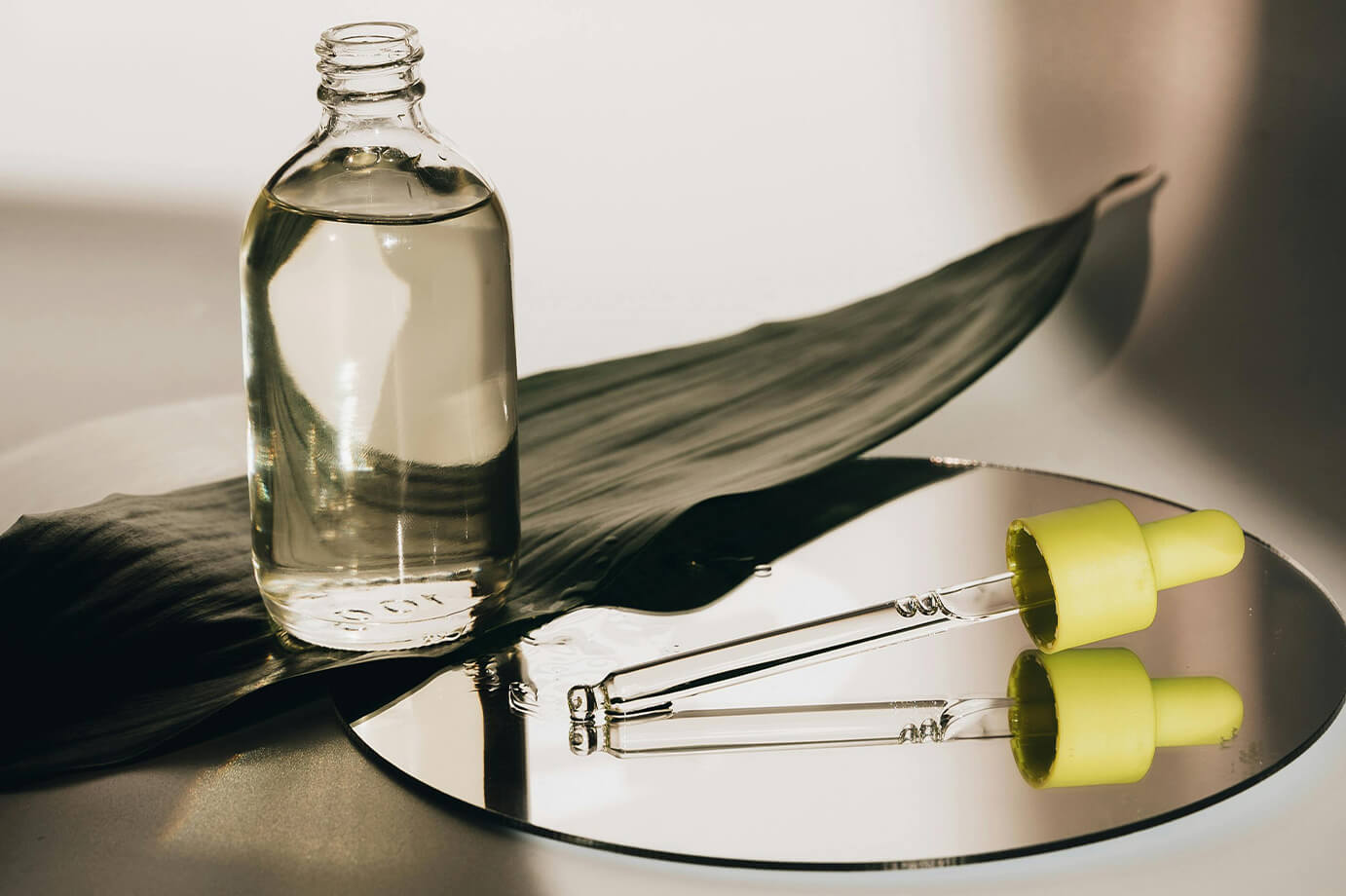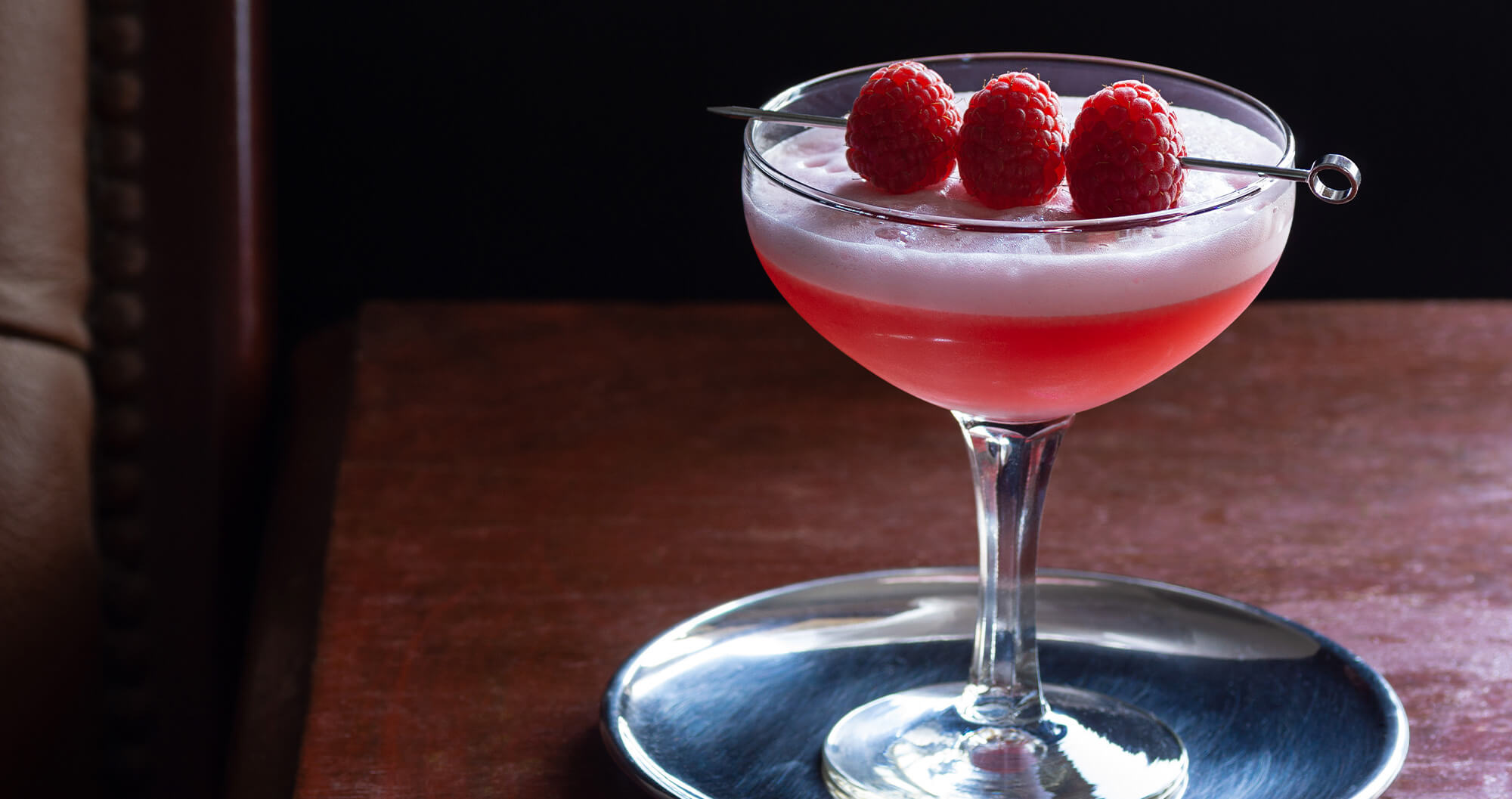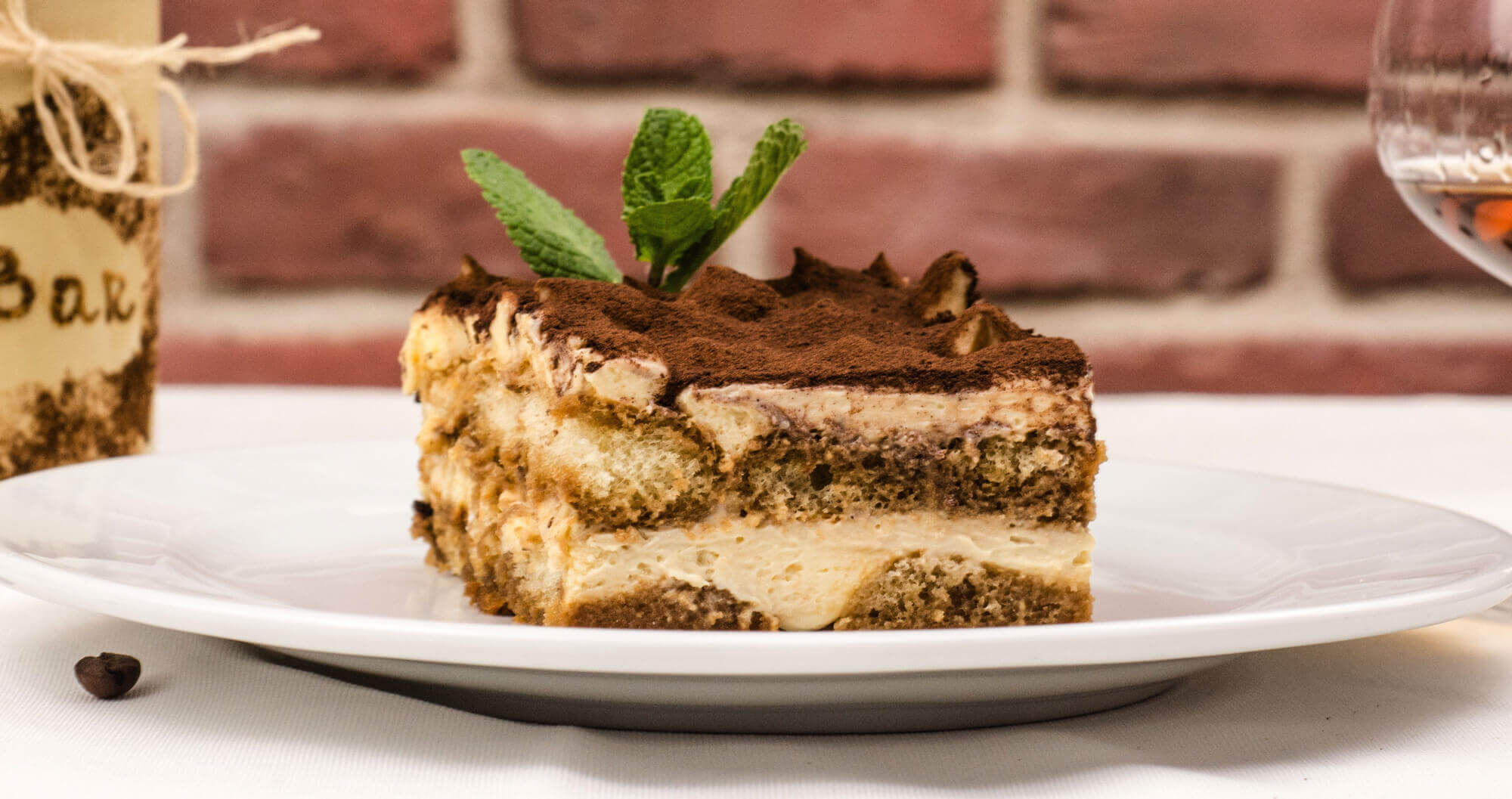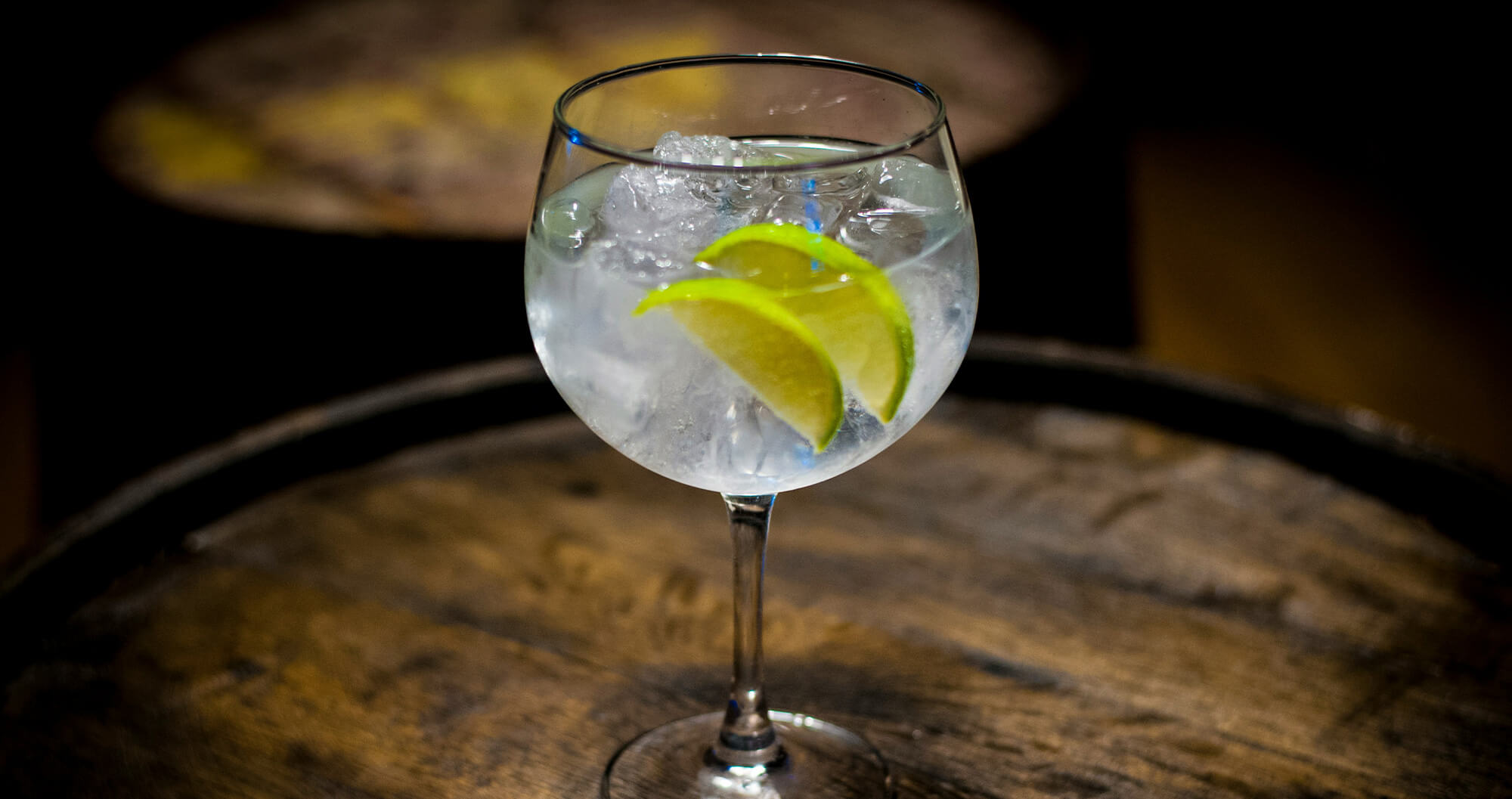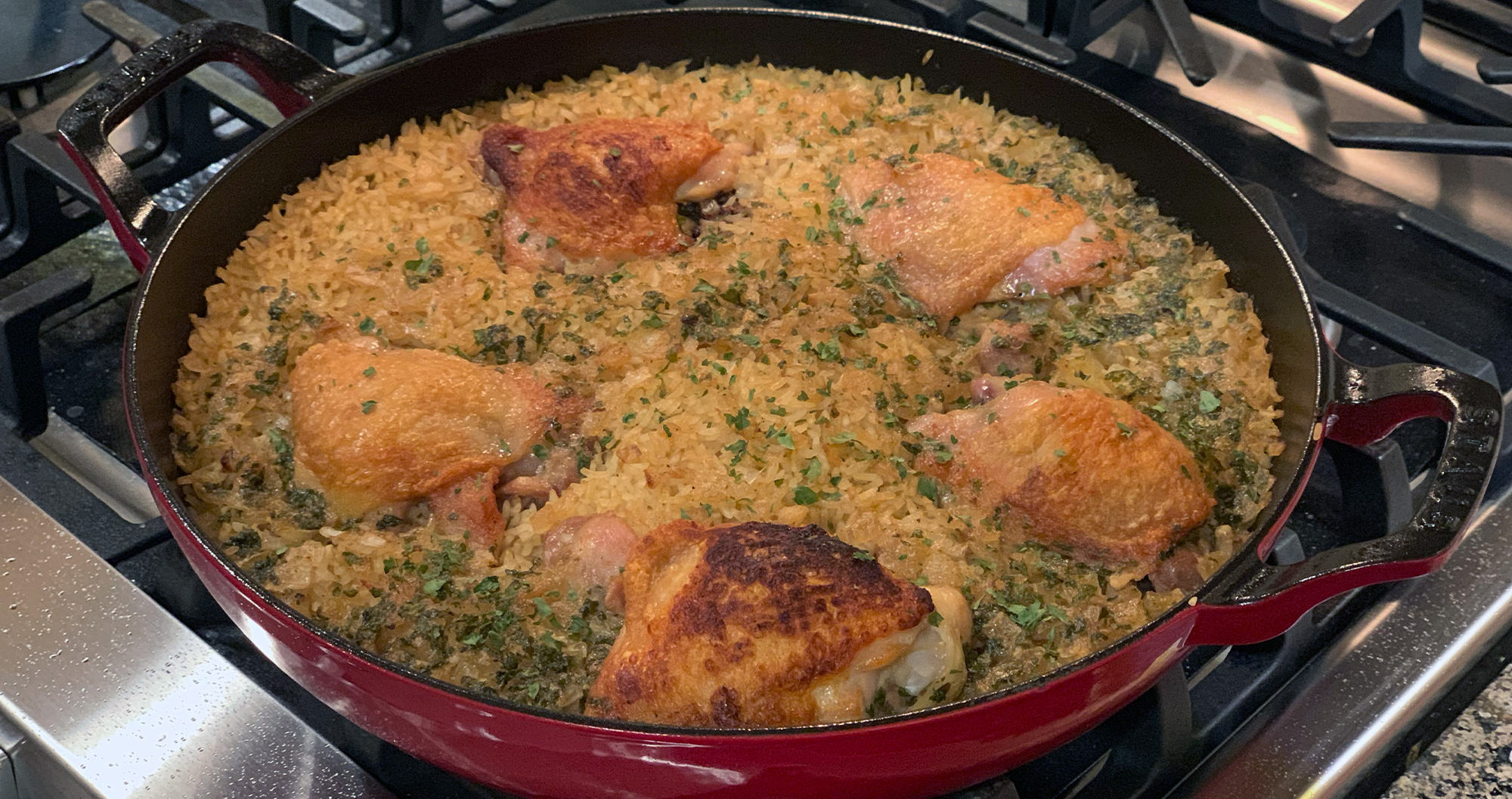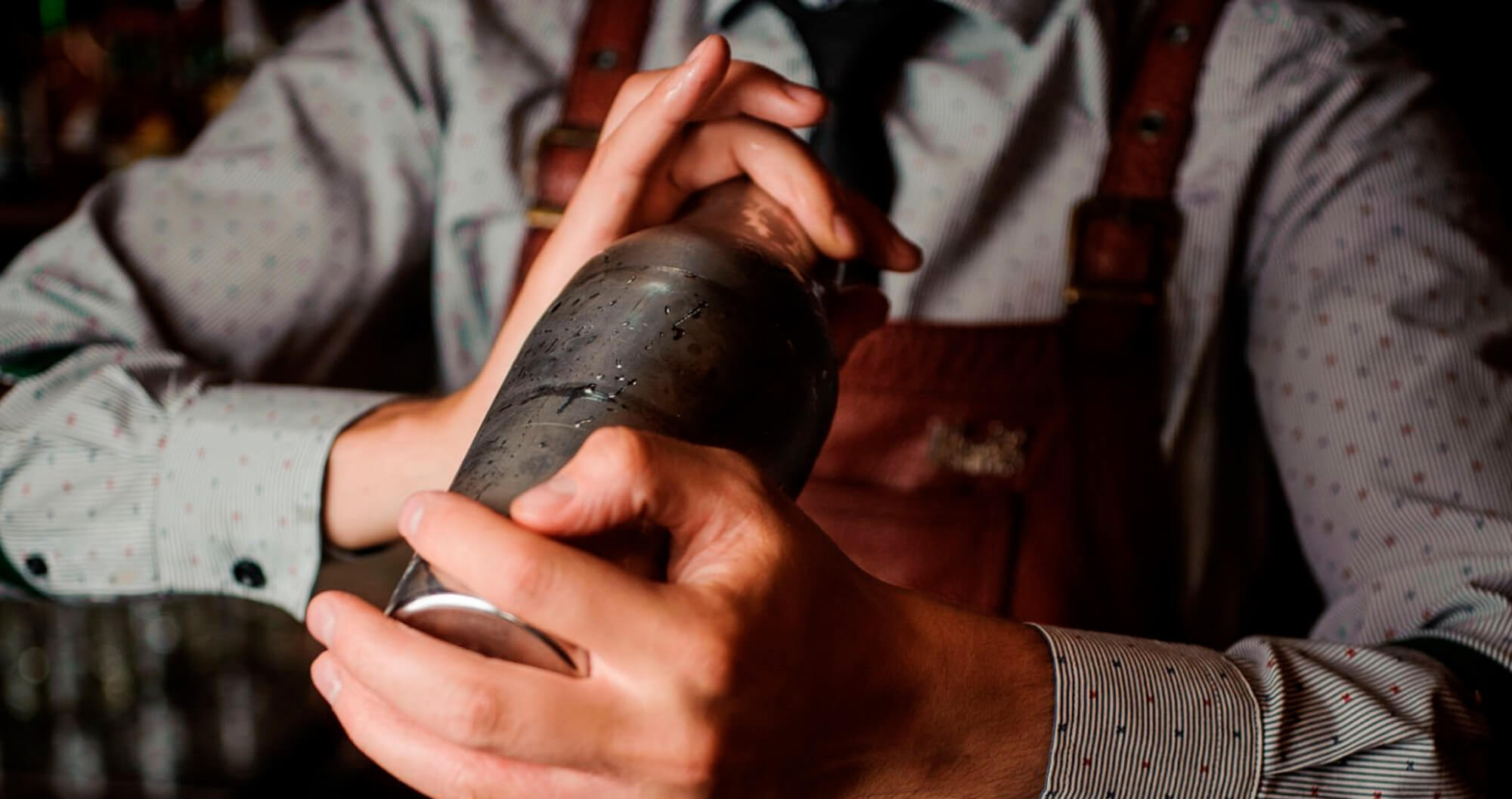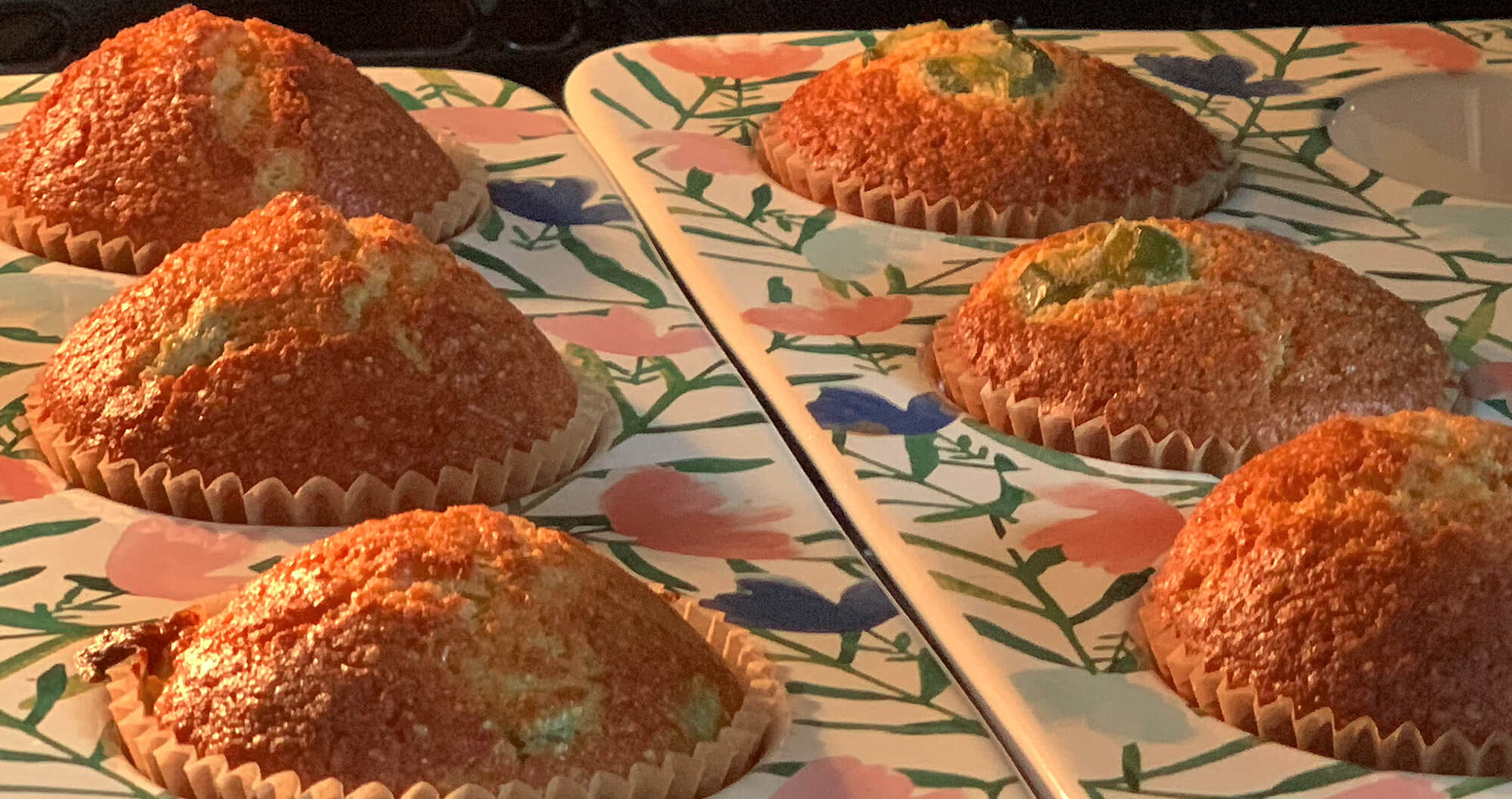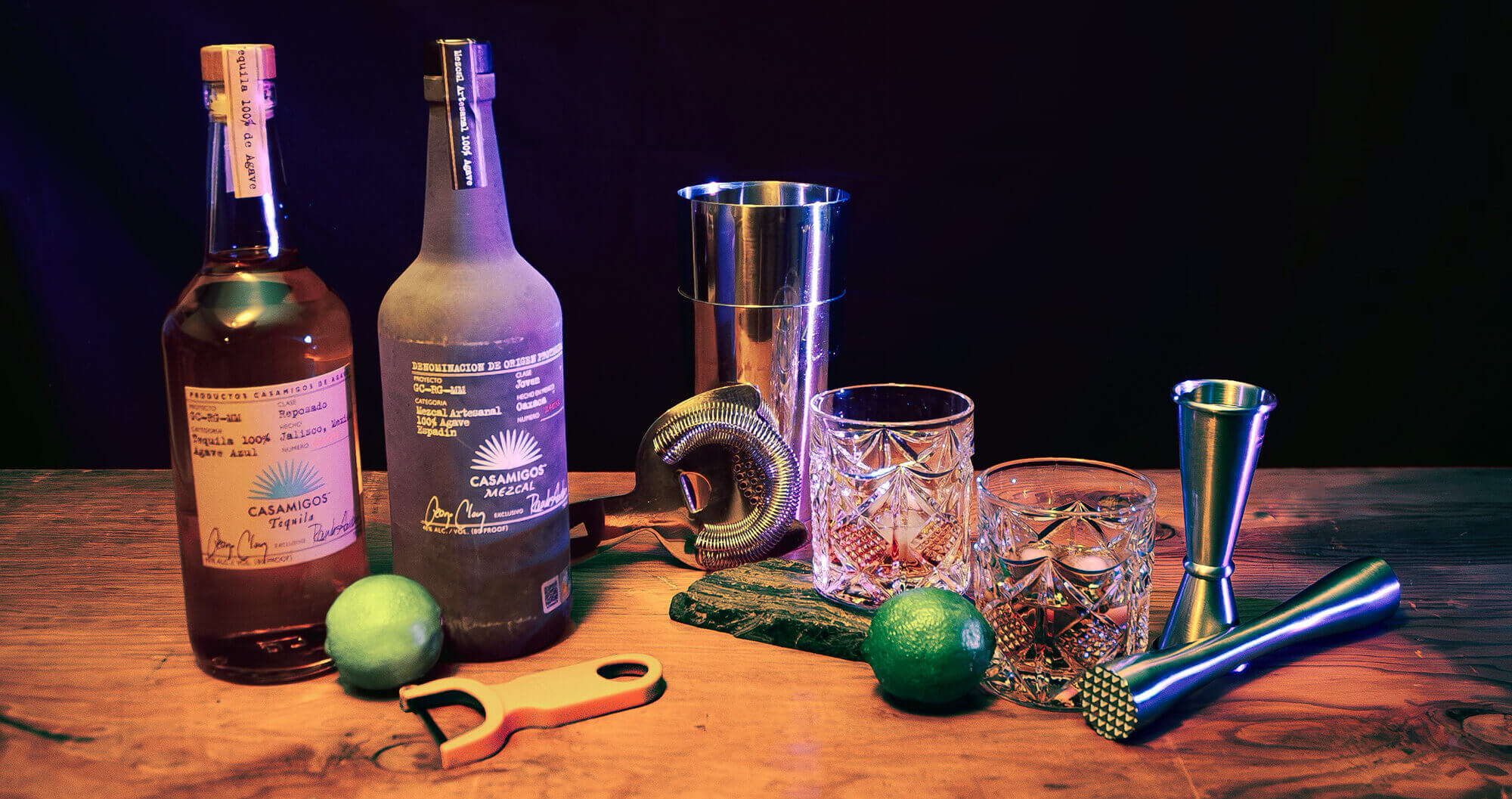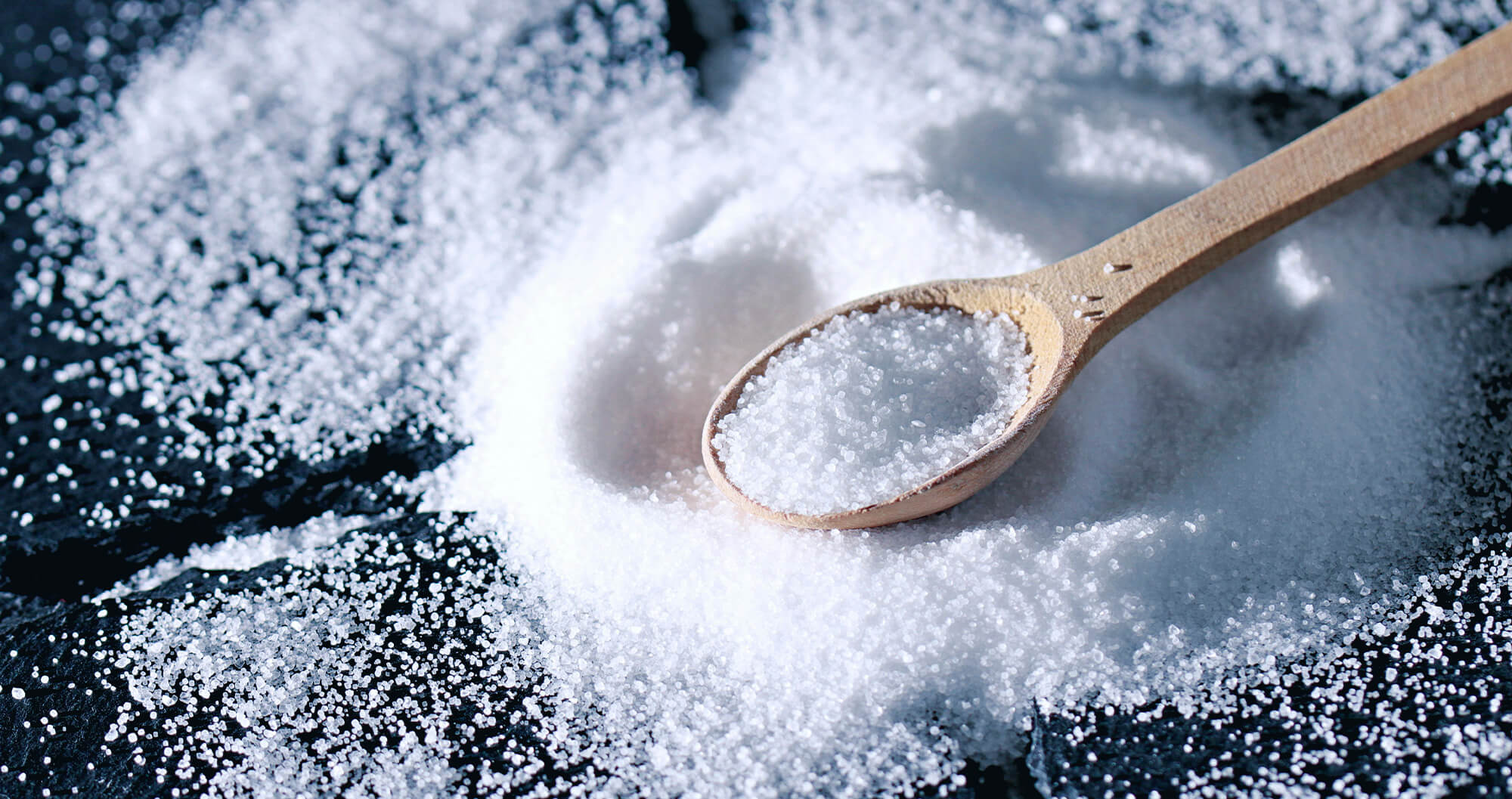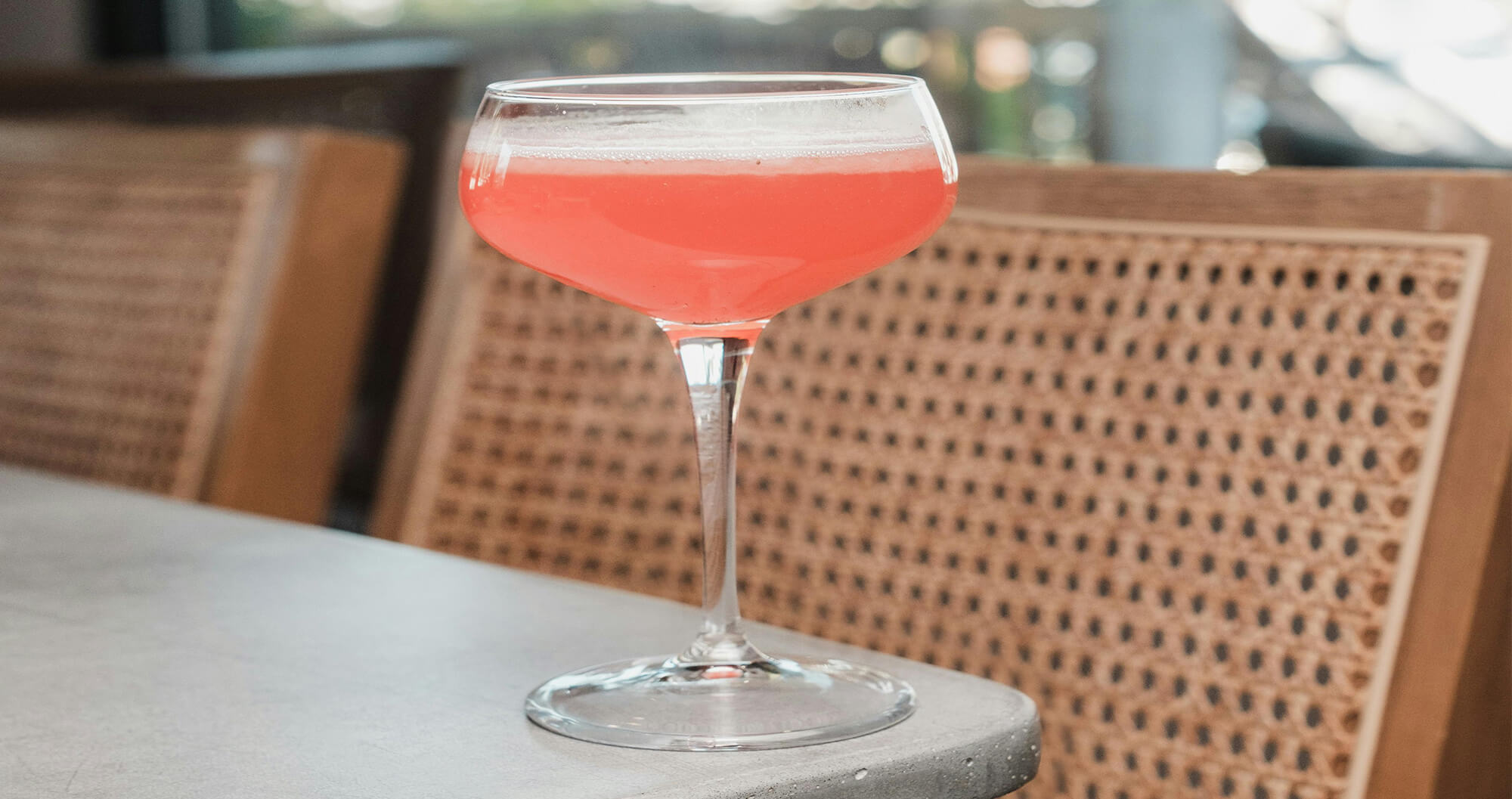Get Cooking & CocktailHelp & How-to’s by Topic
Select an FAQ subject or scroll to browse all.
Jump to a Cooking FAQ topic:
General Cooking | Baking | Beef | Chicken | Cornbread | Desserts | Ingredient Substitutions | Pork | Potatoes | Rice | Sauces & Gravy | Shepherd’s Pie | Sous Vide | Wine Reduction
General Cooking FAQs
What is “mise en place”?
“Mise en place” is a French culinary phrase, meaning putting in place or gather. It refers to the act of assembling & preparing all of your ingredients & equipment before you begin cooking, and is essential for a smooth process & avoiding mistakes.
You’ll notice all of our recipes begin with “mise en place”—it’s very important to get organized before you begin a recipe!
What are “mother sauces”?
“Mother sauces” are the 5 foundation sauces in french cooking, defined by Escoffier’s 1903 book, Le Guide Culinaire. Roughly outlined, the 5 mother sauces are béchamel (butter, flour, milk), velouté (butter, flour, light stock), espagnole (butter, flour, dark stock), hollandaise (egg, butter, lemon), and tomato (mirepoix, dark stock, and tomatoes). They are still considered critical techniques to master as they serve as the foundation for many other sauces, soups, and even entire dishes.
What is “carry over cooking”?
“Carry over cooking” refers to how foods continue to cook after they have been removed from their heat source. Carry over cooking can increase the internal temperature of the food anywhere from +5° F/+3° C for smaller foods—like a steak—up to +20° F/+13° C for a larger foods—like a roast.
What are the benefits of meal prepping?
Meal prep saves you money and time by planning ahead and allowing you to take advantage of grocery sales, lessening your food waste by using ingredients in multiple ways/meals, and speeding up your overall cooking process by having everything ready ahead of time.
Baking FAQs
What’s the difference between baking soda and baking powder?
Baking soda is a single-ingredient leavening agent that requires an acid (like lemon juice, buttermilk, vinegar, etc.) to activate. Baking powder contains both an acid and a base, meaning it works on its own. Using the wrong one in recipes can result in flat cakes, dense muffins, or bitter-tasting cookies.
Why does my baking taste like soap?
A soapy taste in baking can be the result of a few things, but baking soda is the usual culprit. Using too much baking soda and not balancing it with enough acid can cause a soapy flavor, or using old baking soda that has been sitting too long. Using powdered sugar that hasn’t been properly sealed can cause it to absorb flavors from the air, so if it was stored near soap…bingo.
Or, soapy tastes can simply be the result of using cooking tools that weren’t fully rinsed after they were washed.
Why is my chocolate chip cookie dough crumbly?
Crumbly chocolate chip cookie dough means it’s too dry, often caused by too much flour or not enough fat. To fix dry cookie dough, start by adding 1–2 teaspoons of milk or melted butter to restore moisture. Be sure to measure flour correctly by weight, in ounces or grams. If you don’t have a scale, use the spoon-and-level method by scooping flour from its container using a spoon, adding to your measuring cup, then leveling the top. Never use a measuring cup to scoop flour directly out of its container.
Why do you put oil in bread dough?
Oil is added to bread dough to create a softer, more tender crumb and to help prevent it from drying out. Oil also helps extend the bread’s shelf life and enhances elasticity, making the dough easier to shape. Adding butter to bread dough can also help in these areas.
Why is my cake dense and not fluffy?
A dense cake is often caused by overmixing, too little leavening, using the incorrect type of flour, or incorrect ingredient measurements.
To ensure a light, fluffy cake, avoid overmixing the batter (which can deflate air pockets), use fresh baking powder or baking soda, use cake flour, properly cream the butter and sugar, and always measure ingredients by weight.
Why put vinegar in pie crust?
Vinegar helps create a flaky, tender pie crust by a) slowing gluten formation; b) keeping the dough from taking on a gray color/oxidizing; and c) helping to lessen the risk of overworking the dough. Additionally, adding either vinegar, lemon juice, vodka or buttermilk to the dough helps stabilize the fat, leading to a more buttery &crisp texture.
How do I prevent my pie crust from getting soggy?
To keep a pie crust crispy and flaky, par-bake (blind bake) it before adding any wet fillings. Adding an egg wash, or a light dusting of cornstarch or breadcrumbs, then baking in a hot oven (425° F/200° C) creates a barrier that prevents sogginess. Baking pies on the lower rack also ensures a crisp bottom crust.
Beef FAQs
What is the best internal temperature for steak?
The best internal temperature for steak is medium-rare (125° F/52° C) in our opinion, but ultimately depends on your desired texture. Below are explanations of each.
Remember to account for carry-over cooking and remove your steak from the heat about 5° F (2° C) earlier than outlined below.
Rare (120° F/49° C): steak is just barely cooked—closer to raw—and will still release plenty of myoglobin (red juices).
Medium-rare (130° F/54° C): steak is red in the center and tender.
Medium (140° F/60° C): steak is just barely pink in the very middle and beginning to dry out along the edges.
Medium-well (150° F/66° C): beef begins to turn gray & dry out in this range.
Well (160° F/71° C): steak is tough, gray, and dry.
Why is my steak bloody?
Your steak isn’t actually bloody—the red juices you see are are mixture of water & myoglobin, the protein that contains iron and gives beef its red color. So rest assured and munch away on the medium-rare steak!
What is the best internal temperature for a burger?
The best internal temperature for a burger differs from steak because ground beef is a more processed product. We recommend cooking ground beef until at least medium (140° F/60° C) for safety purposes, but below are explanations of each range.
Rare (120° F/49° C): beef is just barely cooked—closer to raw—and will still release plenty of myoglobin (red juices).
Medium-rare (130° F/54° C): beef is red in the center and tender.
Medium (140° F/60° C): beef is just barely pink in the very middle and beginning to dry out along the edges.
Medium-well (150° F/66° C): beef begins to turn gray & dry out in this range.
Well (160° F/71° C): beef is tough, gray, and dry.
Chicken FAQs
What is the best way to cook juicy chicken breasts?
The best way to cook juicy chicken breasts would be via sous vide, if you have the equipment.
If sous vide isn’t an option, brine the chicken breasts overnight (or for at least 2 hours) in the fridge; we prefer dry brines over wet brines, but either will work. Then bake at 400° F (200° C)—or pan-fry over medium-high heat—until the internal temperature reaches 160° F (71° C).
How do you make juicy fried chicken at home?
The secret to the best juicy fried chicken is to marinate it overnight in buttermilk, salt, and seasonings. The acid within buttermilk helps to tenderize the meat, while the addition of salt & seasonings bring depth of flavor.
How do you make crispy fried chicken at home?
To make crispy fried chicken, marinade it in a buttermilk brine right up until you’re ready to start frying. Gently tap off excess buttermilk (but not all of it!), dredge in seasoned flour with a bit of cornmeal, and fry in hot oil at 350°–375° F (177°–191° C).
The secret to crispy fried chicken is heat control—never let your oil drop below 325° F (163° C) and be ready to adjust the heat each time you add chicken as the oil will have a tendency to drop in temperature.
What’s the best oil for frying chicken?
The best oil for frying chicken is one with a high smoke point, such as peanut oil or avocado oil. These oils ensure crispy, golden brown chicken without burning. Be sure to maintain the oil temperature between 350°–375° F (177°–191° C).
Note, although they have a high smoke point, we recommend avoiding seed oils like canola oil or vegetable oil as they are highly processed products that can trigger inflammation in your body.
What is the best internal temperature for chicken breasts?
Given that food safety is essentially temperature + time, the best internal temperature for chicken breasts depends on how they are cooked.
For oven roasting or pan-frying, chicken breast should be cooked until its internal temperature is 160° F (174° C). Once above that point, it will begin to dry out.
For sous vide (our favorite), chicken breast should be cooked until its internal temperature is 145° F (63° C), and held at that temperature for at least 10 minutes.
How do you marinate chicken for grilling?
To marinate chicken for grilling and unlock extra flavor, place your chicken into a food-safe plastic bag, add some olive oil, black pepper, a splash of soy sauce or 1/2 teaspoon of salt, garlic, and any herbs that compliment your overall meal. Discard the marinade after use and don’t add any extra salt to the meat before grilling.
What are the healthiest ways to cook chicken?
The healthiest way to cook chicken would be via sous vide or steaming it as you can cook it without adding any fat, if you’re trying to be super health conscious. Other lower-fat healthy chicken cooking methods include baking, grilling, or making a chicken soup.
Cornbread FAQs
What is the best internal temperature for cornbread?
Cornbread should be cooked until its internal temperature is between 195°–200° F (90°–93° C).
What is the secret to moist cornbread?
Moist cornbread uses ingredients like oil, buttermilk, honey, or creamed corn. If you can, use eggs in your cornbread. Try making cast iron skillet cornbread with a little extra butter or oil for best results, as the cast iron skillet will help evenly distribute heat while baking.
How do you make cornbread without eggs?
Substitute eggs with applesauce or yogurt. Recipes like vegan cornbread or dairy-free cornbread often use these options.
You could also make “flax egg” by mixing 1 tablespoon of ground flaxseed with 3 tablespoons of water, then letting it sit for about 5 minutes to thicken before adding to your batter.
What’s the difference between “Northern” and “Southern” cornbread?
Northern cornbread is sweeter and lighter, often incorporating white sugar, brown sugar, or a combination of each.
Southern cornbread is savory with a crumbly texture, often incorporating lard as its fat source and not using flour.
Can you make cornbread gluten-free?
Yes, by using gluten-free cornmeal and flour, or by making “Southern” style cornbread and skipping the flour, all together. For a similar texture to a flour-based cornbread, gluten-free cornbread often uses almond flour or rice flour.
What dishes pair well with cornbread?
Cornbread pairs well with chili, fried chicken, BBQ ribs, or soups. Popular pairings include jalapeño cornbread with beef stew or sweet cornbread with pulled pork.
What type of pan is best for making cornbread?
You should use a pre-heated cast iron pan to make cornbread. Preheat the pan for at least 20 minutes, carefully swirl some butter (or fat of your choice) around the preheated pan before pouring in your batter, and bake as directed. Cast iron is ideal because it holds heat evenly and will allow the cornbread to release easily when ready to serve.
Dessert FAQs
What is a sabayon?
Sabayon is a rich, luscious, airy French dessert sauce. Traditionally, it consists of whipping egg yolks, sugar, and wine until thick and light, but you can substitute really any liquid in place of wine to get achieve your desired flavor profile. And it’s easier to make than you might think!
Learn how to make a sabayon.
What is the difference between sabayon and zabaglione/zabaione?
Sabayon (French) and Zabaglione (Italian) are both dessert sauces made of sugar, eggs, and wine. However, Zabaglione is more specific than Sabayon in that it calls for the use of marsala wine, whereas the white wine called for in a traditional Sabayon can be substituted for almost any alcohol of your choice.
Learn how to make a sabayon.
What is the difference between zabaglione and zabaione?
There is no real difference between zabaglione and zabaione other than their spelling. “Zabaglione” is more commonly used in southern Italy, whereas “zabaione” is used in northern Italy. Both dessert sauces use egg yolks, sugar, and a sweet marsala wine.
Learn how to make a sabayon.
What is the best internal temperature for sabayon?
Sabayon should be cooked until its internal temperature is between 165°–170° F (74°–77° C).
Learn how to make a sabayon.
What is the best internal temperature for custard for pies?
Custard for pies should be cooked until its internal temperature is 195°F (90° C).
Ingredient Substitution FAQs
What can I use instead of buttermilk?
If you don’t have buttermilk, add 1 tablespoon of lemon juice (or distilled white vinegar) to 1 cup of whole milk, whisk them together, and let the mixture sit for 15 minutes. Whisk one more time, and you’ll have a similar acidity to that of buttermilk.
Alternatively, you can use powdered buttermilk! It’s perfect for those who don’t always keep buttermilk on-hand and only need it for recipes here-and-there.
We recommend Saco Cultured Buttermilk powder.
What is the best substitute for eggs in baking?
Common egg substitutes include mashed banana, applesauce, or commercial egg replacers. The best option depends on the recipe.
You could also make a “flax egg” by mixing 1 tablespoon of ground flaxseed with 3 tablespoons of water, then letting it sit for about 5 minutes to thicken. This is common in vegan recipes.
Can I use baking powder instead of baking soda?
Yes, you can substitute 3 teaspoons of baking powder for every 1 teaspoon of baking soda. However, this may affect the taste and texture of your recipe.
However, if you’re looking to substitute baking soda for cleaning purposes, this won’t work; there’s really no way to replace baking soda when it comes to cleaning.
What can I substitute for heavy cream in cooking?
To replace heavy cream, use half-and-half, evaporated milk, or a mixture of milk and butter.
For a dairy-free option, try coconut cream or cashew cream. If you’re looking to make a dairy-free or vegan whipped cream, whip up some aquafaba instead of heavy cream.
What’s a good gluten-free flour substitute?
Common gluten-free flour substitutes include almond flour, coconut flour, oat flour, and gluten-free all-purpose blends. The best choice depends on your recipe since some flours absorb more liquid than others, or can slightly alter the overall flavor profile.
We recommend Bob’s Red Mill 1:1 gluten-free flour.
What can I use instead of cornstarch to thicken sauces?
You can replace cornstarch with arrowroot powder, potato starch, tapioca flour, or a roux made with butter and all-purpose flour. Note that each substitute affects texture slightly differently so you will need to experiment with ratios.
What can I use instead of flour to make sauces gluten-free?
The most common substitute for flour in sauces is a cornstarch slurry; mix 1 tablespoon of water with 1 tablespoon of cornstarch.
Additionally, cornstarch needs heat to do its magic, so be sure to add a little bit of slurry at a time while the sauce is still over the heat until you reach your desired consistency.
What is the best dairy-free alternative to butter?
Good dairy-free butter substitutes include coconut oil, margarine, vegan butter, and olive oil. For baking, applesauce or mashed avocado/banana can also work.
Can I use honey instead of sugar in baking?
You sure can substitute honey for sugar in baking, but honey is sweeter and contains more moisture, so you’ll need to make a few adjustments: use ¾ the amount of honey that the recipe calls for in sugar, and slightly reduce the liquid.
What’s a good substitute for soy sauce?
If you need a soy sauce alternative, try tamari (gluten-free), coconut aminos (soy-free), or a mix of Worcestershire sauce and balsamic vinegar for a similar umami boost.
Can I use Greek yogurt instead of sour cream?
Yes! Unflavored & unsweetened greek yogurt is a great substitute for sour cream and we actually prefer it over sour cream. Greek yogurt is great in dips, dressings, and baking because it has a similar tangy taste and creamy texture.
Potato FAQs
How do I fix watery mashed potatoes?
Over-boiling your potatoes can cause them to retain water; this can be fixed by adding a thickening agent like potato starch, cornstarch, powdered milk, or instant potato flakes (if you have them). You can also heat the potatoes on low, stirring frequently to evaporate excess moisture but this can be risky.
If your mashed potatoes are watery because you accidentally added too much milk or butter, transfer the potatoes to a fine mesh sieve to drip/drain some liquid, and then mash in a thickening agent or some more plain potato, if you have extra.
What makes mashed potatoes gummy?
Mashed potatoes become gummy when they are overworked or over-mashed, which overdevelops the starch. This usually happens when using a food processor, stand mixer, or blender.
To avoid sticky, gluey mashed potatoes, use a potato ricer (or hand masher) and mix gently with warm butter and milk. Starchy potatoes like Russet or Yukon Gold yield fluffier results.
This extra-large potato ricer from Norpro will make quick work of your mashed potatoes.
What does adding an egg yolk to mashed potatoes do?
The protein in egg yolks helps give mashed potatoes more structure and fluffiness when baked or fried, creating a richer, creamier texture while also helping the potatoes bind together. Adding an egg yolk to mashed potatoes is ideal for potato pancakes, croquettes, or casseroles.
Baking soda potatoes: why do you combine them?
This a key trick commonly used in restaurant-style fries and chips; adding 1/2 teaspoon of baking soda per quart of boiling water helps aid in the break down of pectin within potatoes. This break-down will then enhance potato crispiness when frying or roasting since they will fall apart a bit more on the outside, creating more surface area to crisp up.
Additionally, you’ll get extra-crispy potatoes by adding a little more baking soda when frying or roasting.
When to add vinegar vs. baking soda to potato water?
Both methods are used to control—or aid—in the breakdown of pectin.
Add vinegar to potato water when you want the potatoes to retain their shape, and add baking soda to potato water when you want them to break down more on the outside.
What is the best internal temperature for baked sweet potatoes?
Baked sweet potatoes should be cooked until their internal temperature is 210°–212° F (99°–100° C).
Pork FAQs
What is the best internal temperature for pork?
Food safety = temperature + time, so there are multiple answers to what “the best temperature” is, depending on your cooking method.
For oven roasting or pan-frying, cook pork until its internal temperature is 160° F (174° C). Anything above that point will begin to dry it out.
For sous vide (our favorite), cook pork until its internal temperature is 145° F (63° C), and hold it at that temperature for at least 10 minutes.
How do you cook tender pork chops?
The secret to cooking tender pork chops lies within your preparation: dry brine with a combination of salt and sugar, or marinate them with olive oil, salt, sugar, and seasonings that match your overall recipe.
Then, be sure not to overcook them! Sous vide is your best bet for ensuring juicy pork chops, but if you don’t have the equipment, make sure to roast or pan fry until pork’s internal temperature reaches no more than 160° F (174° C)
What is the best cut of pork for roasting?
The best cuts of pork for roasting are pork loin and tenderloin, and for a loooooong low and slow roast, try pork shoulder (also referred to as pork butt).
What is the difference between pork loin and pork tenderloin?
Pork loin is a larger, fattier, and thicker cut that can be boneless or bone-in. It can have a mild, sweet flavor and is best cooked as a large “Sunday-style” roast.
Pork tenderloin is smaller (long and narrow), leaner, boneless, and cooks quickly; tenderloin is great for grilled or quick oven-roasted recipes.
What are easy slow cooker pork recipes?
Easy slow cooker recipes include pulled pork, pork carnitas, and BBQ pork ribs. Combine pork, your favorite spices, and sauce for a flavorful, hands-off meal.
How do you make pork belly crispy?
To make crispy pork belly, score the fat/skin side in a cross-hatched pattern, then season it (this allows for the flavors to penetrate the fat layer and reach the meat). Then, roast it with the fat/skin side up until it’s about 5 degrees less than your desired temperature, and broil it the rest of the way.
Rice FAQs
How do you cook perfect fluffy rice?
Thoroughly rinsing rice before cooking will help to remove starches that make it sticky, but the best method we’ve found is to soak the rice in warm water for 25–30 minutes followed by a quick rinse.
Always bring the rice and water to a boil for 1 min, then cover and simmer over low heat according to the cooking directions on your rice’s packaging (some rice only calls for a 1.5:1 water-to-rice ratio, some can have a longer/shorter cooking time, etc).
How do you get more flavor in rice?
Cooking your rice in stock or broth instead of water will add delicious complexity to your rice with almost 0 effort. We love keeping stock concentrates—like Better Than Bouillon—in our fridge for this exact reason!
Just remember, rice is meant to play a supporting role in some recipes, so be sure to be mindful of the overall dish before adding additional flavors.
Try our Elevated Baked Chicken & Rice recipe.
What is sticky rice and how do you make it?
Sticky rice is a type of glutinous rice popular in Asian cultures, and you’ll see it often in dishes like mango sticky rice or sticky rice dumplings.
To get the perfect sticky rice, soak a long-grain rice overnight and then steam it over medium heat.
What are healthy rice alternatives?
Healthy rice alternatives like quinoa, cauliflower rice, and brown rice are great for low-carb diets. Most recipes can be easily modified to use these ingredients in place of white rice (especially cauliflower baked rice!)
Try using cauliflower rice in our Elevated Baked Chicken & Rice recipe.
Sauce & Gravy FAQs
What does adding butter to tomato sauce do?
Adding butter to tomato sauce balances acidity, creating a smoother, richer, and less tangy flavor. Butter also helps emulsify the sauce, giving it a silky texture without needing to add heavy cream. Try this technique for Italian pasta sauces—and toss in a bit of anchovy paste, too!
Why is my gravy too thick and gluey?
“Gluey” or overly-thick gravy happens when too much flour or cornstarch was added, or when the gravy is cooked too long.
To fix gluey gravy, whisk in more warm stock—or warm water if you don’t have extra stock. Stir constantly to blend the fresh stock with the thick gravy, and you’ll see it begin to loosen. Using a proper roux ratio (equal parts fat & flour) while stirring often helps prevent a gluey gravy.
Why is my gravy lumpy?
Lumpy gravy occurs when flour or cornstarch isn’t properly dissolved before adding the stock (or water). If you’re in a time crunch with a lumpy gravy, strain it through a fine-mesh sieve for a smoother texture, otherwise prevent lumps in gravy:
Using flour: begin by creating a roux—whisking together equal parts flour into melted butter, and cooking until the raw flour smell has dissipated. Then slowly add warm stock while continuously whisking until your desired texture has been reached.
Using cornstarch: create a slurry by mixing equal parts cornstarch and water before adding to the almost-finished gravy. Then mix the slurry into the gravy over low heat until your desired texture has been reached.
Shepherd’s Pie FAQs
What is traditional shepherd’s pie made of?
Traditional shepherd’s pie is made with ground lamb, mashed potatoes, onions, carrots, peas, and a rich gravy. In some regions, beef is used instead of lamb, but technically, that’s cottage pie.
What’s the difference between shepherd’s pie and cottage pie?
The difference is the meat: shepherd’s pie is made with lamb, while cottage pie is made with beef. Both dishes feature a savory meat filling topped with mashed potatoes.
Can you make shepherd’s pie ahead of time?
Yep, Shepherd’s pie can be prepared in advance and stored in the fridge for up to 3 days before baking. You can also freeze it in individual portions for up to 3 months for easy meal prep.
What are the best seasonings for shepherd’s pie?
Traditional seasonings for shepherd’s pie include salt, black pepper, thyme, rosemary, and Worcestershire sauce. These flavors enhance the savory richness of the dish.
What is a good vegetarian alternative to shepherd’s pie?
A vegetarian shepherd’s pie swaps the meat for plant-based crumbles (we really enjoy the Impossible brand), lentils, or mushrooms while keeping the same traditional mashed potato topping.
Sous Vide FAQs
Can I sous vide frozen meat?
Yes, you absolutely can sous vide directly from your freezer! We love to do this for convenience—just be sure you add at least 1 hour to the overall cooking time called for in your recipe.
Can I sous vide eggs?
You sure can sous vide eggs! There are multiple ways to go about this, depending on what egg texture you want. Basically, the lower the temp, the “gooier” the egg will be (and the longer you’ll need to cook it).
Sous vide eggs at 138° F (59° C) just to pasteurize them; they will still be raw. For a perfect hard-boiled style, sous vide at 190° F (88° C) for 12 minutes, then drop the eggs directly in iced water as soon as you remove them from the sous vide bath to make peeling off the shells easier.
Wine Reduction FAQs
What is a wine reduction?
A wine reduction is made by simmering wine with aromatics (and sometimes stock) until thickened, resulting in a thick liquid that is more concentrated in flavor and complexity. Wine reductions are often used as the base of sauces, but you’ll find them in plenty of other recipes, like stews and soups.
Learn how to make a wine reduction.
What is the best wine for a red wine reduction?
Red wine reductions are best with a dry, flavorful wines like cabernet sauvignon, merlot, or syrah. If you’re recipe calls for very rich cuts of beef, like shirt rib or ribeye, consider a sweeter wine like a port to offset the richness of the fat.
Always use a wine you enjoy enough to drink—you don’t want to concentrate crappy flavors! We often reduce the same wine we’re pairing with the meal.
Learn how to make a wine reduction.
What is the best wine for a white wine reduction?
White wine reductions are best with a dry white wine like Sauvignon Blanc, Voignier, or Pinot Grigio for recipes with chicken, seafood, or pasta. Use a sweeter wine, like a riesling, for dessert sauces.
It’s important to use a wine you’ll happily drink—we usually use the same wine we’re pairing with the meal. You don’t want to concentrate a poor flavor!
How do you thicken a wine reduction if it won’t thicken on its own?
Thicken a wine reduction by whisking in a butter after turning off the heat. This will also add richness to the reduction!
Alternatively, while still over the heat, you could whisk in a precooked roux (milk + flour mixture), or cornstarch slurry. Then, continue cooking for a few minutes while it thickens.
Jump to a Cocktail FAQ topic:
General Cocktails | Bourbon | Fat‑Washing | Gin | Tequila/Mezcal | Whiskey
General Cocktail FAQs
What does adding salt to a cocktail do?
Adding a tiny bit of salt or a few drops of 20/80 saline solution to a cocktail will mute bitterness and bring out subtile flavor notes—mainly sweet & sour flavors. Essentially, we want to be using salt in cocktails for the same reasons we use it in cooking.
Learn how to use salt in cocktails.
What is a Boston shaker?
A Boston shaker is a two-piece cocktail shaker that creates its own create a vacuum-tight seal once closed, reducing the likelihood of leakage while shaking. Boston shakers have one larger tin, usually 28-oz capacity, and a smaller glass or metal tin with a 16–18 oz capacity. They tend to be the preferred style of shaker for professional bartenders, and we like Boston-style shakers because of their large internal capacity, helping to efficiently mix, chill, and aerate your cocktails.
Why use fresh fruit syrup for cocktails?
Using a homemade, fresh fruit syrup for your cocktails allows you full control over flavor and sweetness; you can adjust the intensity level by using different amounts of sugar:water:berries. It also gives you a better berry flavor intensity by using the sweetness of the berries in place of some of the sugar but still yielding the same sweetness level.
Learn how to make fresh fruit syrup.
What is macerating?
Macerating is the act of soaking fruit in sugar—instead of adding water—in order to draw out its natural juices and enhance the flavor of your syrup, jam, or jelly.
Bourbon FAQs
What cocktails can you make with bourbon?
Ultimately, this depends on your preference, but Bourbon’s rich, sweet notes make it perfect for cocktails like the Mint Julep, the Kentucky Mule, the Old Fashioned, and the Bourbon Smash. A Bourbon Sour offers a tangy balance of citrus, sweetness, and creaminess (due to the addition of egg whites).
For a unique twist, try a Paper Plane, which combines bourbon with Aperol and Amaro for a complex, bittersweet flavor.
Gin FAQs
What is gin made from?
Gin is essentially flavored vodka; it’s made from a neutral grain spirit infused with botanicals—primarily juniper berries. Other botanicals like coriander, citrus peels, and cardamom give different gin styles unique flavors.
What are the different types of gin?
The most common types of gin are London Dry Gin, Old Tom Gin, Genever, Plymouth, and New American/Contemporary/Key Gin.
London Dry is the most common with a crisp, juniper-forward taste, while Old Tom is slightly sweeter, Genever has a maltier profile, and New American-style gin tones down the juniper in favor of citrus, floral, or herbal notes.
We love a key-style gin for a clover club cocktail.
What is the best gin for a gin and tonic?
The best gin for a gin and tonic completely depends on your personal preference, but popular mass-produced choices include The Botanist, Bombay Sapphire, and Hendrick’s.
We always recommend finding a gin that is local to you; look for a gin with strong citrus and botanical notes to complement tonic water.
Related: check out the best tonics for a gin and tonic.
How is gin different from vodka?
The key difference between gin and vodka is flavor. Vodka is a neutral spirit with little to no taste, while gin is essentially infused vodka. Gin uses juniper and other botanicals to give it a distinct, aromatic profile.
What cocktails can you make with gin?
Classic gin cocktails include the Gin and Tonic, Negroni, Tom Collins, Dry Martini, Cosmo, and the French 75. Each cocktail highlights different aspects of gin’s botanical flavors.
Mix up a classic Raspberry Cosmo and thank us later.
What is “key gin”?
Key gin is a modernized American-style take on gin that uses citrus to build its flavor profile, such as key lime and lemon peel.
Fat-Washing Cocktail FAQs
What is fat-washing in cocktails?
Fat-washing is infusing spirits with fats that compliment the cocktail’s overall flavor—such as bacon grease, olive oil, butter, etc. A spirit is mixed with a melted fat, then set aside at room temperature to allow the fat to infuse into the spirit. After a few hours, it’s then chilled in the fridge until the fat solidifies at the top of the spirit, then the at is skimmed off, leaving the fat-infused spirit.
Try this method with bourbon & bacon fat in an old fashioned and thank us later.
How do I fat-wash spirits for cocktails?
To fat-wash a spirit for cocktails, start with about about 3oz of liquefied fat (melted bacon grease, olive oil, melted butter, etc) per 750ml bottle of alcohol, mix it all together in a wide-mouth container at room temperature, let it sit for a few hours to infuse, then chill in the fridge for another few hours or until the fat has solidified, then skim it off.
Once you make your first drink with your fat-washed spirit, adjust your next batch to your preferred intensity.
Is fat-washing safe to do at home?
Yes, fat-washing is safe to do at home as long as you properly strain and store the spirit in the fridge after infusing. Start with easy fat-washing experiments like coconut rum or butter-washed dark rum.
What are the best spirits for fat-washing?
Spirits like bourbon, rum, and even gin work really well. Try a chicken olive oil-washed gin for martinis, a coconut-washed white rum for daiquiris, a butter-washed dark rum for tropical drinks, and bacon fat-washed bourbon for old fashioneds.
What flavors pair well with fat-washed cocktails?
Sweet and savory flavors pair well, like maple syrup, citrus, or smoked spices. Try fat-washed cocktail recipes with orange bitters or spiced honey syrup.
Tequila/Mezcal FAQs
What is the difference between tequila and mezcal?
Tequila and mezcal are both made from agave plants, but they differ in production methods and flavor profiles. Tequila is made exclusively from blue agave and typically has a smoother, sweeter taste. Mezcal takes less time to produce, is usually made from a variety of agave species, and is roasted in underground pits, giving it a distinct smoky flavor.
What are the best cocktails to make with tequila?
Tequila works exceptionally well in simple, citrus-forward drinks. It’s perfect in classic cocktails like margaritas, Palomas, and tequila sunrises (it’s 5:00 somewhere).
Is mezcal stronger than tequila?
Mezcal and tequila have similar alcohol content, typically around 35–55% ABV, depending on the brand. However, mezcal’s smoky flavor can make it feel more robust, while tequila is generally smoother and sweeter.
What foods pair well with tequila?
Tequila pairs wonderfully with dishes like fresh ceviche, grilled shrimp, or tacos that have a bright flavor profile. Additionally, try pairing a chilled tequila cocktail (or, straight-up) with citrus-forward seafood on a warm day. Oh yeah&helip
What foods pair well with mezcal?
Mezcal’s smoky notes complement rich, earthy dishes like mole, smoked meats, or roasted winter vegetables.
Whiskey FAQs
What is the difference between whiskey and bourbon?
Whiskey is a broad category of distilled spirits made from fermented grain mash, while bourbon is a specific type of whiskey that must be made in the U.S. with at least 51% corn and aged in new charred oak barrels. Bourbon tends to be sweeter and richer due to the corn content, making it ideal for cocktails like the Old Fashioned and Manhattan.
Whiskey vs. Scotch: what’s the difference?
Whiskey refers to a broad category of grain-based spirits, while Scotch whisky (no “e”) is specifically made in Scotland using malted barley and aged for at least three years in oak casks. Scotch often has a strong smoky & peaty flavor, while American whiskeys like bourbon and rye have sweeter or spicier profiles.
What’s the Best Whiskey Cocktail?
The best whiskey cocktail depends on your preference, but classics like the Manhattan and Whiskey Sour are among the most popular.
For a smooth, refreshing option, try a Whiskey Highball, and those who enjoy bold flavors may prefer a Boulevardier or a Penicillin cocktail with honey and ginger.
What’s the Best Whiskey for an Old Fashioned?
A high-quality bourbon or rye whiskey works best in this drink. An Old Fashioned is designed to highlight a whiskey’s natural flavors by adding only a few drops of bitters and a touch of sugar, so look for locally distilled options which will usually deliver more smooth, crisp, unique, and complex flavors over some more mass-produced options.
However, some easier-to-find bourbons like Elijah Craig, Old Forester, or Woodford Reserve will also work; they’ll add smooth caramel and vanilla notes, while rye whiskey like Rittenhouse Rye or WhistlePig gives a spicier kick.
Check Out Our Latest Tips & Tricks for Success in Your Kitchen & Home Bar.
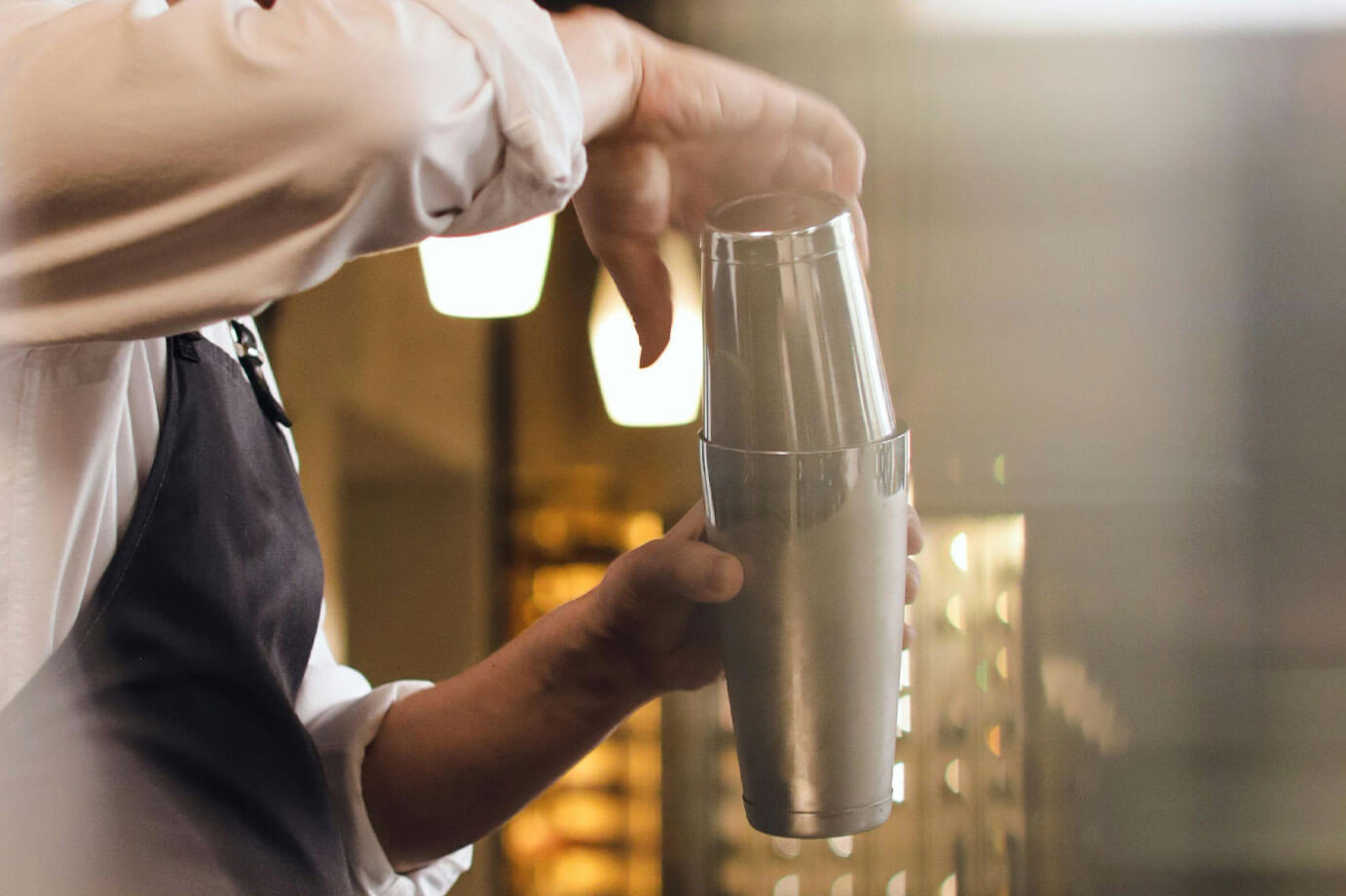
Cocktail Shaker is Stuck!
When a shaker is being a jerk, we can help you get to the liquid gold, inside.
Learn How to Open a Stuck Shaker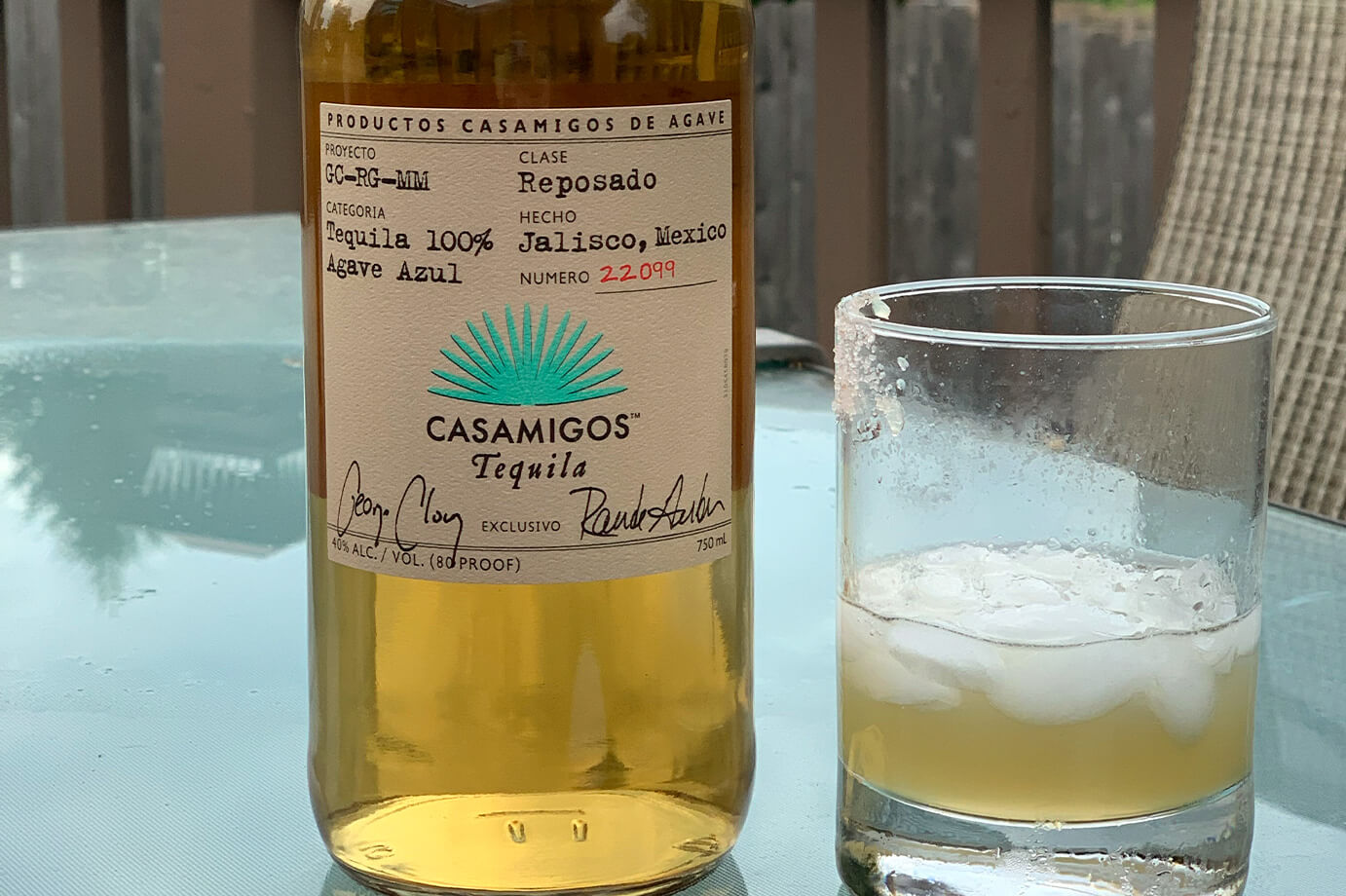
George Clooney is a Genius
Learn some tips for getting the most out of Casamigos tequila.
Explore Casamigos TequilaSo grab your shaker, roll up your sleeves, and dive into the world of cocktails. Welcome to Whisks & Giggles, where every recipe is a toast to your growing skills and creativity.
More from Whisks & Giggles
Never miss a new cocktail recipe or tip—get the latest content delivered straight to your inbox.

